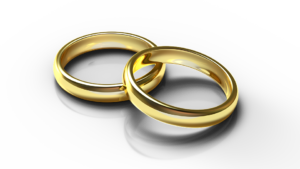Blog
Posted December 11, 2019
Marriage allowance or married couples allowance – What’s the difference?
What is the difference between marriage allowance or married couples allowance? Although these allowances sound similar, the eligibility requirements are quite different.
What is Marriage Allowance?
 Marriage allowance is a tax relief that allows a UK tax payer to transfer 10% of their personal allowance to their spouse or civil partner, in 2019/20 this is £1,250.
Marriage allowance is a tax relief that allows a UK tax payer to transfer 10% of their personal allowance to their spouse or civil partner, in 2019/20 this is £1,250.
The marriage allowance means that the receiving partner will pay less tax, the tax code of both partners will change to show the marriage allowance has been claimed. The recipients tax code will usually change to “M” and the senders tax code to “N”.
If you are eligible, the claims can be back dated 4 years. To be eligible to claim marriage tax allowance you must:
- Be married or in a civil partnership
- Not be receiving married couples allowance
- Born after 6 April 1935
- The sender must earn less than the personal allowance
- The recipient must be a basic rate tax payer
More information can be found on the government website.
What is Married Couples Allowance
 Married couples allowance is available to couples who are married or in a civil partnership where one of the couples was born before 6 April 1935.
Married couples allowance is available to couples who are married or in a civil partnership where one of the couples was born before 6 April 1935.
If the couple was married before December 2005 the amount of the allowance is calculated using the husband’s salary, after this date the allowance is calculated using the highest earners salary.
To be eligible you need to meet the following requirements:
- Be married or in a civil partnership
- Living with your spouse or civil partner
- One of the couple must be born before 6 April 1935.
The married couples allowance is a tax reduced and the minimum allowance in 2019/20 is £3,450 and the maximum is £8,695, it reduces your tax bill by 10% of the allowance you are entitled to.
The Government guidelines can be found here
SERVICES
LATEST NEWS
CATEGORIES
- Blog (137)
- Business Advice (45)
- Just For Fun (16)
- Tax Tips (30)
- Video (8)










